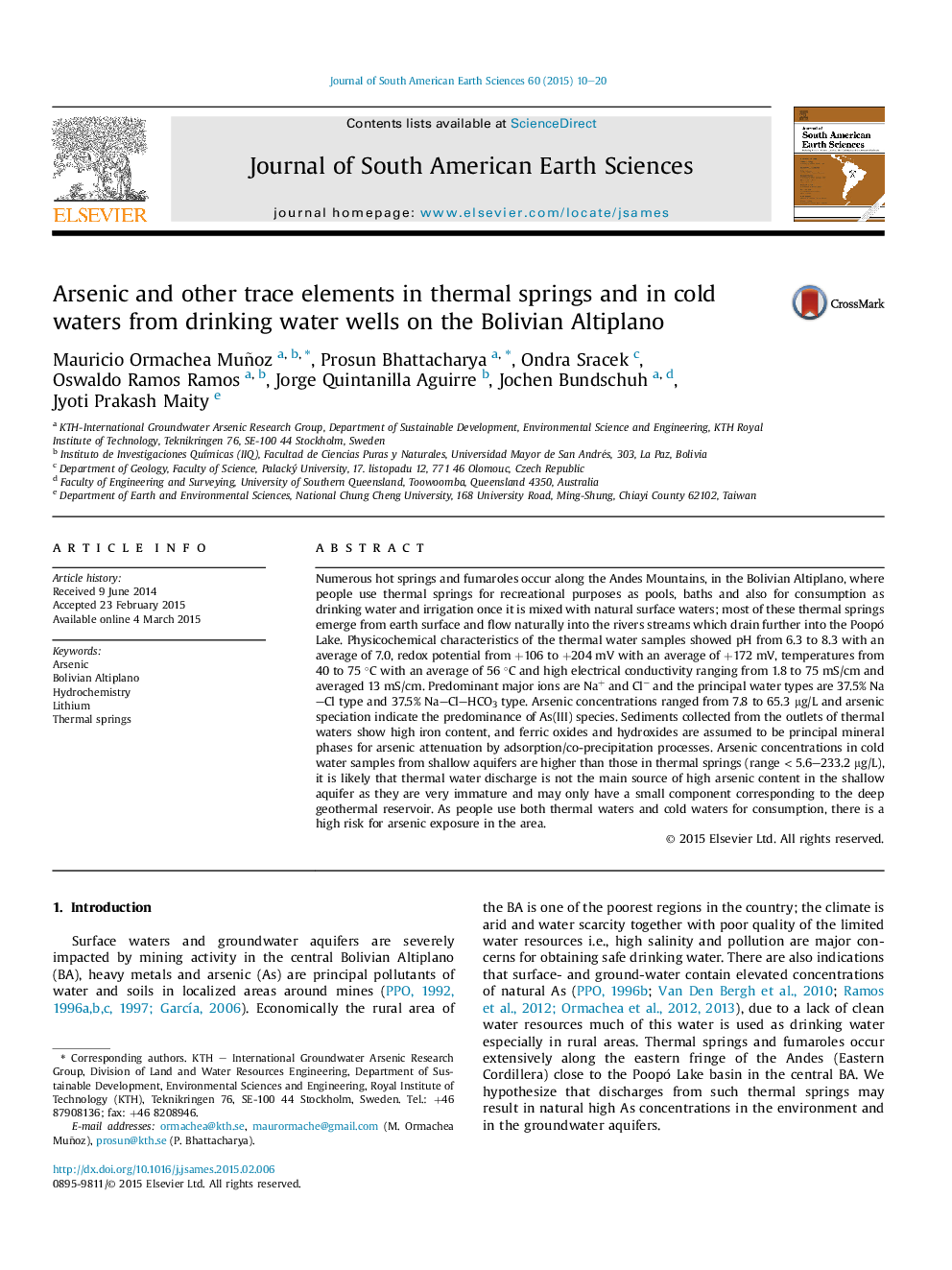| کد مقاله | کد نشریه | سال انتشار | مقاله انگلیسی | نسخه تمام متن |
|---|---|---|---|---|
| 4682052 | 1635149 | 2015 | 11 صفحه PDF | دانلود رایگان |

• Thermal springs of the Bolivian highland are predominantly Na–Cl or Na–Cl–HCO3 water types.
• Geothermal waters are diluted with meteoric water and groundwater from the shallow aquifer.
• Natural attenuation of arsenic occurs by adsorption onto iron oxides/hydroxides.
Numerous hot springs and fumaroles occur along the Andes Mountains, in the Bolivian Altiplano, where people use thermal springs for recreational purposes as pools, baths and also for consumption as drinking water and irrigation once it is mixed with natural surface waters; most of these thermal springs emerge from earth surface and flow naturally into the rivers streams which drain further into the Poopó Lake. Physicochemical characteristics of the thermal water samples showed pH from 6.3 to 8.3 with an average of 7.0, redox potential from +106 to +204 mV with an average of +172 mV, temperatures from 40 to 75 °C with an average of 56 °C and high electrical conductivity ranging from 1.8 to 75 mS/cm and averaged 13 mS/cm. Predominant major ions are Na+ and Cl− and the principal water types are 37.5% Na–Cl type and 37.5% Na–Cl–HCO3 type. Arsenic concentrations ranged from 7.8 to 65.3 μg/L and arsenic speciation indicate the predominance of As(III) species. Sediments collected from the outlets of thermal waters show high iron content, and ferric oxides and hydroxides are assumed to be principal mineral phases for arsenic attenuation by adsorption/co-precipitation processes. Arsenic concentrations in cold water samples from shallow aquifers are higher than those in thermal springs (range < 5.6–233.2 μg/L), it is likely that thermal water discharge is not the main source of high arsenic content in the shallow aquifer as they are very immature and may only have a small component corresponding to the deep geothermal reservoir. As people use both thermal waters and cold waters for consumption, there is a high risk for arsenic exposure in the area.
Journal: Journal of South American Earth Sciences - Volume 60, July 2015, Pages 10–20